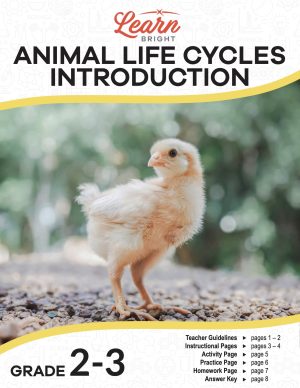Description
What our Put Numbers in Order lesson plan includes
Lesson Objectives and Overview: Put Numbers in Order teaches students strategies for putting numbers in order up to three digits. At the end of the lesson, students will be able to put numbers in order by comparing two three-digit numbers based on the meanings of the hundreds, tens, and ones digits. This lesson is for students in 1st grade and 2nd grade.
Classroom Procedure
Every lesson plan provides you with a classroom procedure page that outlines a step-by-step guide to follow. You do not have to follow the guide exactly. The guide helps you organize the lesson and details when to hand out worksheets. It also lists information in the blue box that you might find useful. You will find the lesson objectives, state standards, and number of class sessions the lesson should take to complete in this area. In addition, it describes the supplies you will need as well as what and how you need to prepare beforehand.
Options for Lesson
Included with this lesson is an “Options for Lesson” section that lists a number of suggestions for activities to add to the lesson or substitutions for the ones already in the lesson. One optional addition to the lesson activity is to have your students use their number cut-outs to play “war” with their partner, either making the least or the greatest number as the winning number. You can also have your students color the numbers and glue them onto construction paper in sets of five, from least to greatest or greatest to least. If you want to add another activity to the lesson, you can have your students identify numbers they see in the classroom and list them from least to greatest or greatest to least.
Teacher Notes
The teacher notes page includes a paragraph with additional guidelines and things to think about as you begin to plan your lesson. This page also includes lines that you can use to add your own notes as you’re preparing for this lesson.
PUT NUMBERS IN ORDER LESSON PLAN CONTENT PAGES
Comparing Numbers
The Put Numbers in Order lesson plan includes three content pages. You can compare numbers to each other. Some numbers are greater or smaller than other numbers. To compare them, you must understand place value.
For example, let’s look at the number 427. For this number, the 4 is in the hundreds place and represents 400, the 2 is in the tens place and represents 20, and the 7 is in the ones place and represents 7. Together, they make 427.
When you compare numbers, always begin with the largest place value. If the largest place value digit is the same, you then compare the digit to its right, which is the second largest place value digit.
For example, let’s compare two numbers: 427 and 431. The largest place value digit, found in the hundreds place, is the same for both numbers, 4. Therefore, you need to compare the next largest place value, the tens. The digits in the tens place are 2 and 3. Since 3 is larger than 2, the number 431 is greater than 427.
Instead of using the terms “greater than,” “less than,” and “equal to,” you can use symbols to compare numbers. Use < for less than, > for greater than, and = for equal to. Using the previous example, you determined that 431 > 427. This means that 431 is greater than 427. The arrow always points to the smaller number.
Ordering Numbers
Sometimes, you will need to put numbers in order, either from smallest to largest or largest to smallest. For example, you might need put the sizes or weights of different objects in order as part of your science class.
No matter why you need to put numbers in order, your first step is always to compare the numbers. When putting numbers in order from least to greatest, you’re writing them from smallest to largest. When putting numbers in order from greatest to least, you’re writing them from largest to smallest.
Examples
Let’s look at an example. Let’s put the numbers 632, 362, and 623 in order from least to greatest. First, find the smallest number by comparing the hundreds place. Two of these numbers have 6 in the hundreds place, but one has a 3 in the hundreds place. That number is the smallest number because 3 is smaller than 6. Next, compare the two remaining numbers by comparing the tens place. 632 has a 3 in the tens place, while 623 has a 2 in the tens place. 2 is less than 3, so now you know that 623 is less than 632. Finally, let’s put all three numbers in order from least to greatest: 362 < 623 < 632.
Let’s look at another example. Let’s put the numbers 467, 479, and 478 in order from greatest to least. First, find the largest number by comparing the hundreds place. All three of these numbers have 4 in the hundreds place. This means we need to look at the tens place. The number 467 has a 6 in the tens place, while the numbers 479 and 478 both have a 4 in the tens place. This tells us that 467 is the smallest number, because 6 is less than 7. Finally, compare the ones place. 479 has a 9 in the ones place and 478 has an 8 in the tens place. 9 is greater than 8, so 479 is our largest number. Finally, let’s put all three numbers in order from greatest to least: 479 > 478 > 467.
Creating Numbers Using Digits
For additional practice, you can use any three digits to make six different numbers and then arrange them in order from least to greatest or greatest to least. For example, the digits 4, 5, and 9, can be used to make 6 numbers, which you can then put in order from least to greatest (459 < 495 < 549 < 594 < 945 < 954) and greatest to least (954 > 945 > 594 > 549 > 495 > 459).
PUT NUMBERS IN ORDER LESSON PLAN WORKSHEETS
The Put Numbers in Order lesson plan includes three worksheets: an activity worksheet, a practice worksheet, and a homework assignment. You can refer to the guide on the classroom procedure page to determine when to hand out each worksheet.
CUT OUT ACTIVITY WORKSHEET
Students will work with a partner to complete the lesson activity. Each pair will cut out the numbers on the worksheet and put them in order from least to greatest. They will then mix them up and put them in order from greatest to least. Next, they will cut out the tables on the second page of the worksheet and complete them by listing the numbers from least to greatest and greatest to least.
NUMBER SETS PRACTICE WORKSHEET
For the practice worksheet, students will first put sets of numbers in order from greatest to least and in order from least to greatest. They will then use specific digits to make six different numbers, putting them in order from greatest to least or least to greatest. Finally, they will place sets of numbers in order from both least to greatest and greatest to least.
PUT NUMBERS IN ORDER HOMEWORK ASSIGNMENT
The homework assignment asks students to use >, <, and = to compare numbers. They will then solve word problems that require them to place sets of numbers in order from either greatest to least or least to greatest.
Worksheet Answer Keys
This lesson plan includes answer keys for the activity worksheet, the practice worksheet, and the homework assignment. If you choose to administer the lesson pages to your students via PDF, you will need to save a new file that omits these pages. Otherwise, you can simply print out the applicable pages and keep these as reference for yourself when grading assignments.









